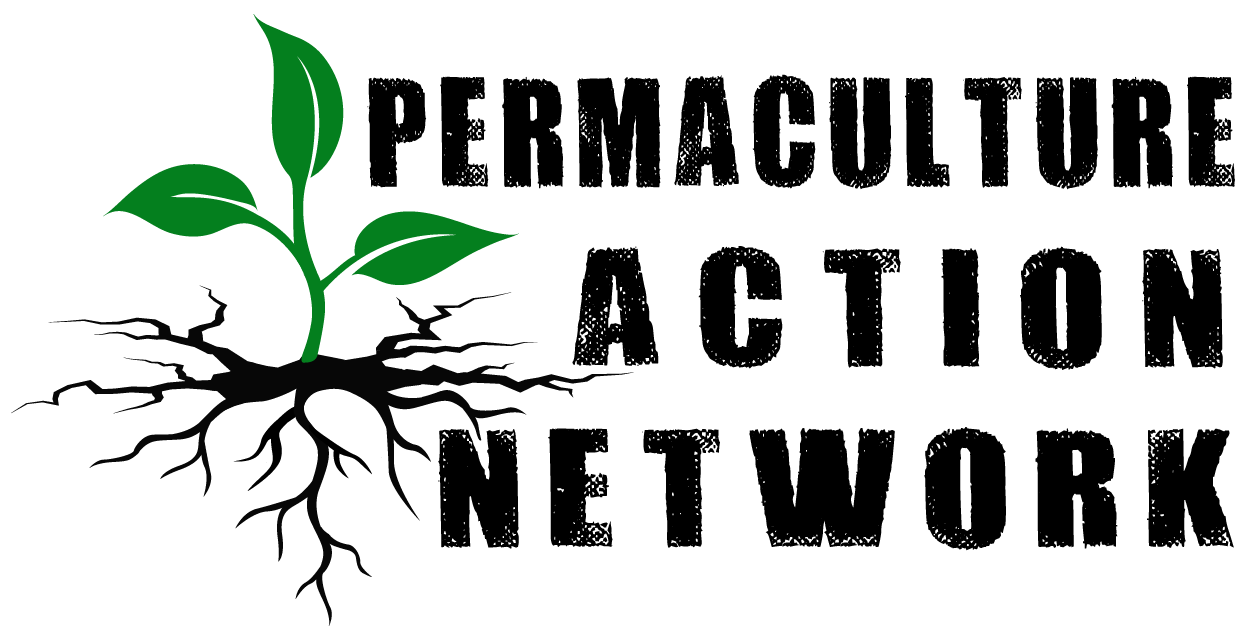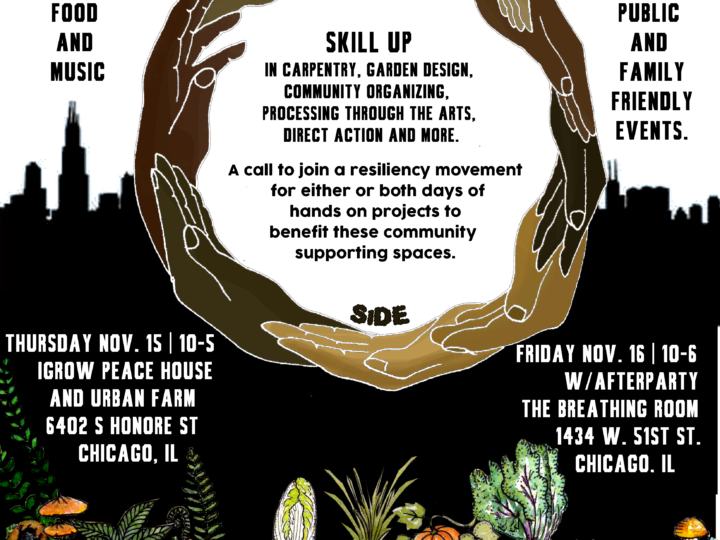 On Thursday, October 16th the Permaculture Action Tour landed in the front lawn of “the homestead,” a collective house in Boise, Idaho. Unseen from the street, the backyard hosts an amazing food garden full of kale and delicious red chard, egg-laying chickens, and sheep.
On Thursday, October 16th the Permaculture Action Tour landed in the front lawn of “the homestead,” a collective house in Boise, Idaho. Unseen from the street, the backyard hosts an amazing food garden full of kale and delicious red chard, egg-laying chickens, and sheep.
On this day, we brought volunteers to spread the permaculture vision to the entire property surrounding the house, which could be seen from one of Boise’s busiest roadways.
The co-housing community where the Action Day was held is on State Street, a road that sees 40,000 cars pass by a day. Most drive by without a clue to the beauty and productivity of the backyard gardens that hide behind the normal looking house. That all changed after the Polish Ambassador came to town! Over fifty people from the show the night before came out to participate in Boise’s Action Day, transforming the front and surrounding lawn of the homestead into a regenerative, food-producing forest garden.
This is a picture guide on how we did it!
Earthworks
First, earthworks were dug. By digging ditches on the downslope along the sidewalk, we are able to capture the rain water that would otherwise shed off the yard, and into the street, in the landscape.
Mulching Pathways
Flags were laid out to mark the pathways, as well as where major trees and planting would go. This allowed people to follow the markings and start creating the food forest according to the way it was mapped out without having been involved in the design process. Here, one participant shovels wood chip mulch out of a wheelbarrow to fill in the pathways.
Digging Holes
We dug the holes for the major plantings. As we planted each tree, shrub, or other perennial, we filled in the hole with the soil we had dug up mixed with compost, and then top dressed the ground around the plant with some additional compost to give the roots some good nutrients to start growing in.
Planting Trees
We planted a great diversity of fruit and nut yielding trees and shrubs: Honey Locust, Sea Berry, Pecan, Hazelnut, Plum, Gooseberry, Goumi, Cherry, Chestnut, and Quince.
Planting hardy plants
Each flag had the name of the species to be planted in the flagged spot written on it; and each potted plant had a wooden popsicle stick or tag labeling the plant, allowing people to easily match the planting placement according to the design. The first plantings were our hardy species of trees, shrubs, and other food-bearing or useful perennial plants.
Plant Support Species
We chose support species to plant around our hardy trees and shrubs, including Horseradish, Yarrow, Comfrey, Goji berries, and Goumi. Many of these species yield a beneficial use for people, such as food and medicine, as well as an important function for the plants they grow next to. Comfrey, for example, is a dynamic accumulator that pulls up nutrients from the deep sub-levels of soil through its large taproot and makes those nutrients available for the more shallow roots of the young trees and shrubs when the leaves drop or are cut to the ground, as well as yielding a medicinal use for people in healing bones, skin, and muscle tissue. Yarrow (pictured) also has healing properties and is known to heal topical wounds, cuts, and abrasions, among many other medicinal uses, as well as repelling pest insects and attracting beneficial ones.
Create guilds
By planting the support species around the plants from which we want a high yield, we create functional connections between the various species that lead to a self-managing mutual support system. Goumi, while yielding a highly nutritious edible berry, also contribute nitrogen to the plants around them through nitrogen fixation. Nitrogen fixing plants are able to pull nitrogen out of the air through their leaves and make it available to the plant roots in the soil around them through a symbiotic relationship with bacterium on their root nodules.
Mulch Around What You've Planted
Spreading wood chips in a circle around the root zone of the plants keeps the moisture in the soil and prevents water in the soil from evaporating easily. Wood chips, straw, dried leaves, and other carbon-rich mulches will also break down and form healthy top soil.
Mulch Around the Trees
In a forest system, leaves naturally drop and form a natural mulch on the forest floor that retains moisture and builds top soil. In the early phases of our forest gardens, we want to mimic this effect by laying mulch around the root zone of our trees and shrubs – a function that the trees will later provide for themselves as your forest garden becomes self-maintaining.
Special thanks to Eric Sugalski for funding this permaculture project!





















